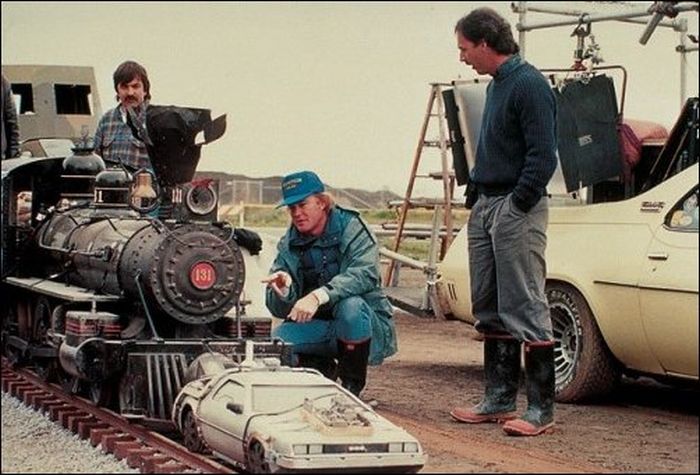The Lack of Originality in Films
March 15, 2016
It’s that old saying that you hear your dad or grandpa saying: “they don’t make ’em like they use to anymore.” And quite frankly, it’s becoming more evident. In 2015, movie studios had released more sequels, remakes, spinoffs, and book adaptations than original films (meaning not based off the former, but solely an original idea).
And quite frankly, it’s getting annoying.
It’s the one thing that makes the world go round, and no it isn’t gravity. It’s the little green slips of paper with a president’s profile picture that sit in your pocket everywhere you go. It’s one of the few things that can make humans do inexplicably daring things. And for Hollywood, it’s the only thing that keeps their billion dollar industry running.
with streaming services like pay-per-view, Hulu, Netflix, CrunchyRoll, and Amazon prime, individuals have a lesser desire to go to the movie theaters. “I’ll just watch it when it comes on Netflix” is the thought that goes through many of these subscribers’ heads. And for Hollywood, it scares the living hell out of them; which is why they can no longer take risks on films that they know might not make break profit.
Not only does Hollywood want to make movies that they know they won’t lose money on, but they also like to create films that everyone, not just the United States, but the world can see. With the high rise of the film industry beginning to surge in countries like China, Japan, and Russia, Hollywood has to make films that these people can see and relate to. Movies like Transformers, The Avengers, or even Disney; it’s something that everyone can relate to and see, unlike Spotlight or The Big Short, where they strictly relate to American politics.
But for someone like myself, who enjoys paying 10 whopping dollars to go see a film (another reason why individuals don’t go to the movies anymore,) it discerns me that 65% of the movies are not original based ideas. But it doesn’t stop there.
Not only does Hollywood create too many unoriginal films, but it’s also the way they’re produced. Something seen in most movies nowadays is dialogue-cut-dialogue-cut. In other words, a character will be having conversation, they’ll say their dialogue, and it will cut to the other person, convey their dialogue, and so on and so forth. It’s an easy and fast way to create quick conversation, which makes the production of the film even faster.
Alfred Hitchcock, also known as the master of suspense, was someone who enjoyed directing quality movies and adding in as much artistic quality that fit properly. He knew exactly when to create a wide shot to show characters doing something, and closer shots to show how a character is feeling. Of course, any director can do that, but not if they do not know how to properly execute. Also, when watching one of his movies, you’ll realize that he doesn’t like to show how exactly how a character feels through dialogue, but also by their body language.
In his film Rope, which tells the story of two Ivy-League graduates who murder a former classmate as a way to show their intelligence: to commit the perfect crime and not get caught. In whole, the movie is only shot in ten takes, with the longest take being ten minutes long. Phillip Morgan, (played by Farley Granger) one of the co-murderers of the party, is quite uneasy about the act they performed. It is shown many times through his dialogue, but through his tone of voice and stiffness of his body posture throughout the movie shows us more than what comes out of his mouth.
One of the great modern directors of our time (with original content, and writes all the films he directs) is the loudmouthed and egotistical Quentin Tarantino. The most popular thing Tarantino does in his films is to jump from present to past throughout the entire movie, until about the last 30 minutes where all the pieces of the puzzle begin to come together.
If Hollywood keeps going the way the way they are, increasing the amount of unoriginal movies released every year, audiences are going to become tired and annoyed with the unoriginality. It’s like how House M.D. episodes are structured: A dying patient comes in, House figures out how to cure them, they begin to get better, they get worse again, and House doesn’t know how to save them. Then, he has a huge realization on how to cure the patient and they’re cured by the end of the episode.
It goes the same for most action movies: The heroine goes through many obstacles to catch the bad guy, the protagonist and antagonist clash at the very end, the protagonist almost loses the fight, about to die, and then somehow turns the fight around and saves the day.
It goes for almost every genre movie; they all go through the same formula/pattern.
If they want to keep or increase their box office sales, Hollywood needs to release more diverse movies that have more taste to them, even if it’s a remake, spinoff, or book adaptation. If it’s an action movie and two characters are having conversation, use a wide angle shot instead of jump cutting. It will keep the audience members like me more interested in a movie they’ve most likely seen already done before.
“It is better to fail in originality than to succeed in imitation.” -Herman Melville
